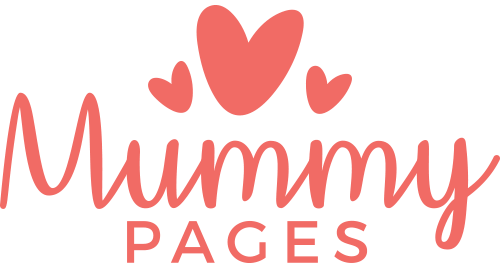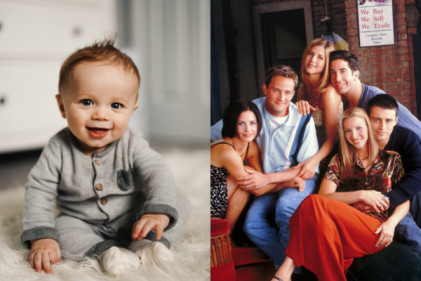Children who are born with Down syndrome may also have certain visual impairments. The most common are refractive errors; such as short-sightedness, long-sightedness and strabismus (crossed eyes). These conditions may occur during infancy and persist into childhood. More than half of people with Down syndrome wear corrective glasses. The majority of children with Down syndrome have difficulty focusing on nearby objects. Other issues that may occur in children with Down syndrome include:
Short-sightedness (Myopia): In people with myopia (short-sightedness), the eyeball is slightly longer, from back to front, than normal. Light rays which make up the images you see, focus in front of, rather than directly on the retina, the light sensitive part of the eye. Light entering the eye is focused incorrectly, making distant objects appear blurred. Myopia is a type of refractive error in the eye. Myopia can be treated with the prescription of glasses.
Long-sightedness (Hyperopia): Children with farsightedness or hyperopia can see distant objects clearly but closer objects appear blurred. Hyperopia, like myopia is a type of refractive error. In a child with hyperopia, when light rays enters the eye they focus behind the retina, rather than directly on it. This causes objects viewed at a close distance to be blurry. This condition can also be corrected with the prescription of glasses.
Accommodation: Many children with Down syndrome experience difficulty focusing on objects that are near-by. Recent studies have shown that this problem can be addressed with the use of bifocals. These studies have also shown that for some children, wearing bifocals is only a temporary requirement, with some children learning to focus accurately without them and later reverting to wearing glasses instead of bifocals.
Astigmatism: Astigmatism is a type of refractive error. It is not an eye health problem but is a problem with how the eye focuses light beams that enter the eye.In an eye with astigmatism, light fails to come to a single focus on the retina to produce clear vision. Instead, multiple focus points occur, either in front of or behind the retina.Astigmatism is characterised by an irregular curvature of the cornea. Astigmatism occurs to some degree in most people but usually doesn’t require treatment. Depending on the degree of astigmatism, prescription glasses which counteract the curve of the eyeball may be required.
Strabismus: Strabismus is a condition where the eyes are not parallel; this can be where one eye wanders in, out, up, or down. It may be present at all times or it may only appear when a child is tired, ill, or concentrating on nearby objects. It may be present from birth or it may only show up later in life.
For normal vision, both eyes need to look in the same direction at the same time. When a child has a crossed or wandering eye, the resulting effect is a different picture from each eye. Strabismus (crossed eyes or squint) is quite common in people with Down syndrome and if treated early can be treated successfully.
Presbyopia: Presbyopia is a condition which causes the lens of the eye to lose its ability to focus. This can cause difficulty seeing objects up close. Presbyopia is an age related disease and generally occurs in people over the age of 40. When we are young the lens of the eye is soft and flexible, as we age the lens becomes rigid. As a result, tasks, such as reading become increasingly difficult. It occurs in practically everyone and people with myopia generally experience less problems. However, presbyopia commonly happens at a younger age in people with Down syndrome. Reading glasses or bifocals are usually prescribed.
Cataract: A cataract is a clouding of the lens. It can cause the person to have one or more of the following: blurred vision, double vision, difficulty seeing in bright light, and increased sensitivity to glare. A cataract can be present at birth (congenital cataract) or can develop later on due to trauma or injury. Cataracts can be treated with surgery, which involves removing the lens. The lens of the eye is removed and replaced with an artificial lens. Sometimes, contact lenses are recommended in place of the artificial lens particularly in younger patients.
Glaucoma: This rare form of glaucoma which is present in newborns is slightly more common in children with Down syndrome. The eyes typically look larger and you will notice your baby is distressed by bright lights. The eyes may also water excessively. If you notice any of these symptoms urgent referral to an ophthalmologist is essential.
Nystagmus: Nystagmus is where there is uncontrollable movement of the eyes, in a back and forth motion, up and down or around in circles. This occurs where the optic nerve has not developed properly. A baby can be born with Nystagmus, or it can be something that is developed in weeks or months after the birth. The bigger the eye movements are, the more likely that this is an indication of vision problems. Nystagmus occurs in about 15% of people with Down syndrome. There is unfortunately no cure for nystagmus and no effective treatment. Corrective lenses or contacts do not correct nystagmus however they can be used to help other vision problems.
Nystagmus responds to physical and emotional triggers like tiredness or stress. It is therefore very important to maintain a healthy lifestyle in order to optimise visual acuity. For people suffering from nystagmus they often develop a head tilt. This is because there is a position in the eye’s orbit where the eyes are virtually still. This position is called the null point. A person with nystagmus may use this position to her advantage by developing the head tilt which will put the eyes in the null position.
There are also lots of helpful aids out there which will help a child with nystagmus including, reading devices, large print books, magnifying devices and improved lighting sources.
Brushfield spots: Brushfield spots are small white or grey/brown spots that are commonly found in the periphery of the iris in the human eye due to aggregation of connective tissue. They occur commonly in children who suffer from Down syndrome.
Keratoconus: Keratoconus is a progressive eye disease which causes the cornea, which is normally round in shape to bulge into a cone line shape. This cone shaped cornea deflects light when it enters the eye on its way to the retina and causes vision to be distorted. Symptoms may include: sensitivity to bright light, double vision, difficulty adjusting to changes in light and halos around images. There is an increased risk of keratoconus in people with Down syndrome. Keratoconus can be treated with the prescription of glasses but contact lenses are the best form of treatment. Parents, carers and the person with Down syndrome will need to be trained how to insert and remove lenses.











